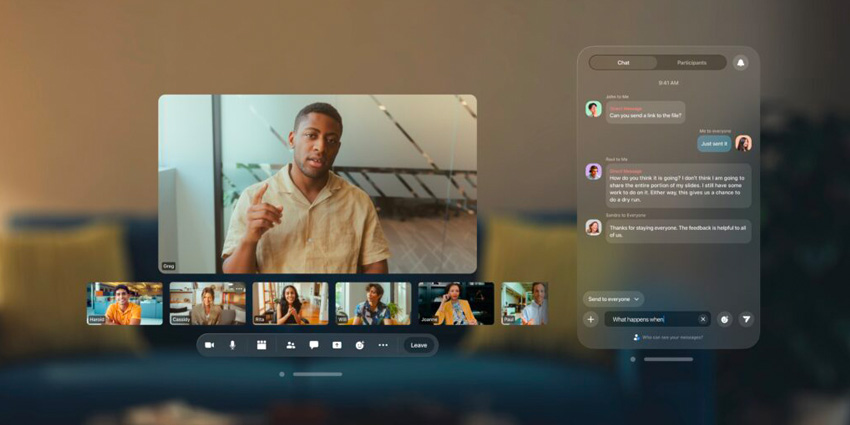Eye and hand-tracking technology is quickly becoming crucial to the extended reality experience. As XR solutions evolve rapidly, consumers demand more intuitive, convenient user interfaces. With state-of-the-art sensor technology, XR developers can eliminate the need for clunky controllers.
These intelligent tools empower users to interact with digital content using natural “spatial computing” gestures and actions. The result is deeper immersion, improved user experiences, and a stronger link between humans and computer systems.
As we continue our journey into the digital world, here are some main reasons companies investing in XR should consider implementing eye and hand-tracking tools.
1. More Immersive, Intuitive User Experiences
Perhaps the most significant reason to invest in eye and hand-tracking solutions for extended reality is that they can massively improve user experiences. Many of the most advanced vendors in the XR space offer eye and hand tracking to boost user immersion.
For instance, the Apple Vision Pro allows users to interact with apps and technologies using innate actions like gestures and eye movement. With eye and hand tracking capabilities, users can remove the middleman (controllers) from interactions with digital content.
This leads to greater productivity and efficiency in XR environments. Surgeons can practice moving their hands across virtual cadavers rather than using a controller to point and click. Employees can swipe through apps just as they would on a smartphone.
2. Eye and Hand Tracking Deepens Immersion
As noted above, one of the biggest benefits of eye and hand tracking technology in XR is greater immersion. Spatial computing concepts allow us to interact with computers and virtual worlds using our natural actions, from raising a hand to looking at a certain point on a screen.
Deeper immersion doesn’t just improve user experiences and make XR more memorable. It can also directly impact the results obtained from extended reality sessions. For instance, a more immersive virtual learning experience can help users to develop new skills faster.
In the training landscape, the realistic simulations enabled by hand and eye tracking can help build muscle memories and increase knowledge retention. In the collaborative space, tracking sensors can help to bring teams closer together, improving feelings of inclusion and connectivity.
3. Improved XR Technology Performance
Eye and hand tracking sensors provide valuable insights not just to companies but to the software and computing tools companies use. Collecting data about where a user is looking or what they’re interacting with allows the software to render information more efficiently.
Some vendors in the XR space utilize eye and hand tracking alongside artificial intelligence for foveated rendering. This means the system first renders the crucial information a user needs, minimizing lag, latency, and GPU load.
Foveated rendering allows extended reality tools to mimic our actual vision. It places what we need to see in a more precise focus, reducing the pixels used for peripheral content. This helps to reduce visual overwhelm and minimizes the amount of computing power required from a system.
4. Eye and Hand Tracking Delivers Useful Insights
Whether business leaders leverage XR for customer experience, training purposes, or collaboration, accessing and analyzing the right insights is essential. Systems capable of tracking hand and eye movements in the extended reality space can gather valuable data for business growth.
With gesture tracking tools in the enterprise, business leaders can spot where employees might be making mistakes during crucial processes. Mixed and augmented reality solutions can even guide employees remotely, reducing the risk of errors.
With eye-tracking insights, companies can collect valuable data for future metaverse consumer interactions. Retail companies can monitor which displays and products capture customer attention. They can monitor customers’ paths around virtual environments and adjust their sales and marketing strategies accordingly.
5. Enhanced Security in the Metaverse
As the metaverse continues to emerge, transforming various aspects of our personal and working lives, discussions around security and compliance are evolving. Eye and hand-tracking technologies don’t just create a more comfortable and intuitive experience for teams. They also help companies to implement higher levels of security.
With biometric tools, companies can quickly authenticate users of a virtual ecosystem, keeping personal data and intellectual property secure. Tracking technologies can also help companies pinpoint noncompliance issues in the metaverse.
Analytical tools could help discern when employees or other users act inappropriately, creating a safer and more comfortable experience for every user. This will be crucial as more data and individuals enter the metaverse.
6. Eye and Hand Tracking Improves Virtual Representation
Introducing the metaverse and more advanced digital interactions is prompting the creation of more advanced virtual identities. Today’s XR users want to be able to represent themselves in virtual environments using hyper-realistic avatars.
Bringing these avatars to life requires more than just excellent 3D rendering software. Users must also be able to collaboratively portray gestures, facial expressions, and movements. Users can more realistically represent themselves using advanced hand and eye tracking technologies.
Innovators like Meta, Apple, and Microsoft are experimenting with sensors that track complex facial expressions. This helps to reduce miscommunication and improve social cohesion. Investing in eye and hand-tracking tools allows companies to create more human, natural XR experiences.
Unlocking Eye and Hand Tracking in the XR World
Eye and hand-tracking technologies have become commonplace in virtually every XR environment. Mixed, augmented, and virtual reality innovators are leveraging ever-more advanced tools to collect and use spatial computing data.
These technologies will empower companies to provide users with a more comfortable, intuitive experience in the digital world. Moreover, they’ll unlock new insights, business growth, and security opportunities. For companies investing in the future of XR development, eye and hand tracking will be table-stakes technology for ensuring success.






